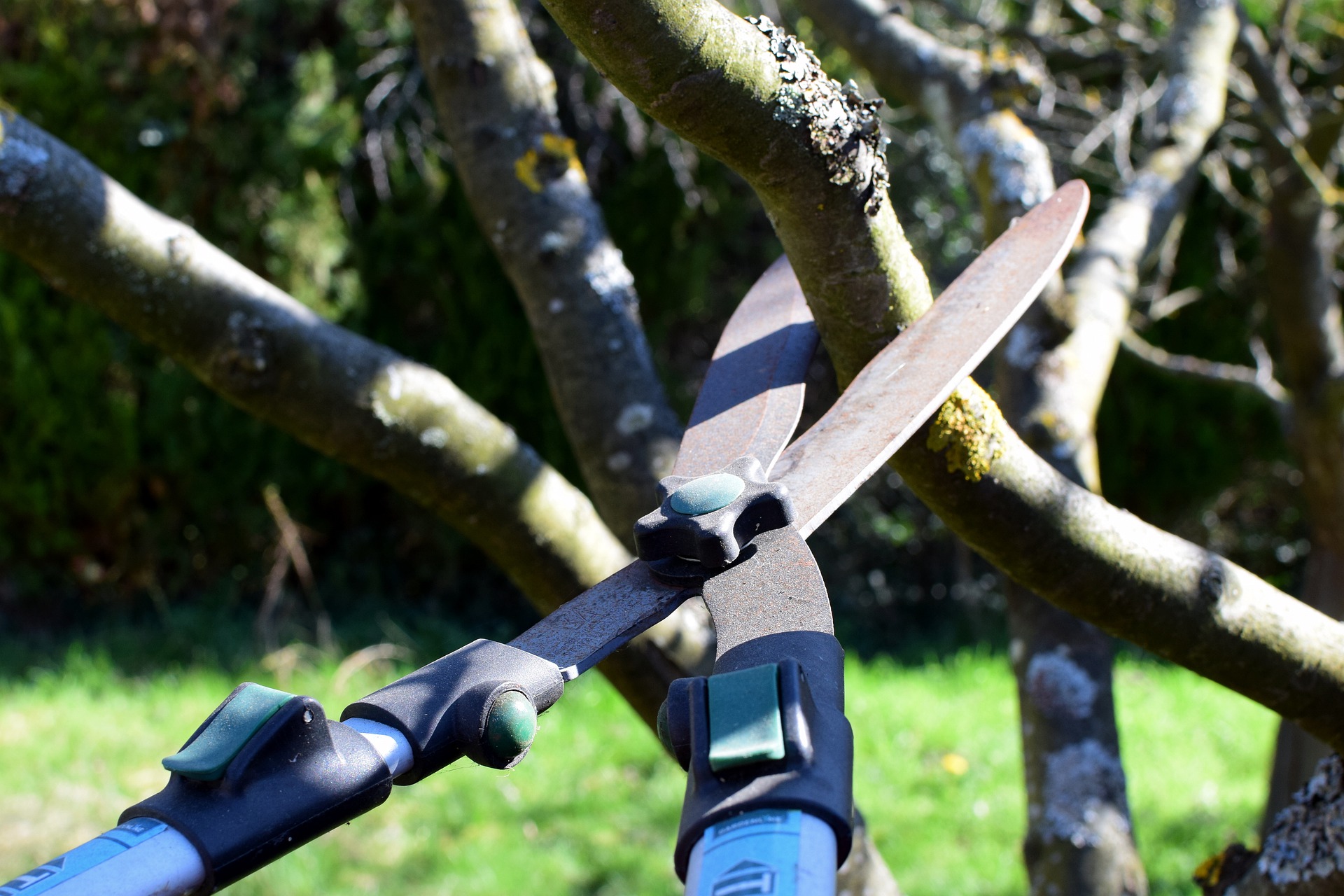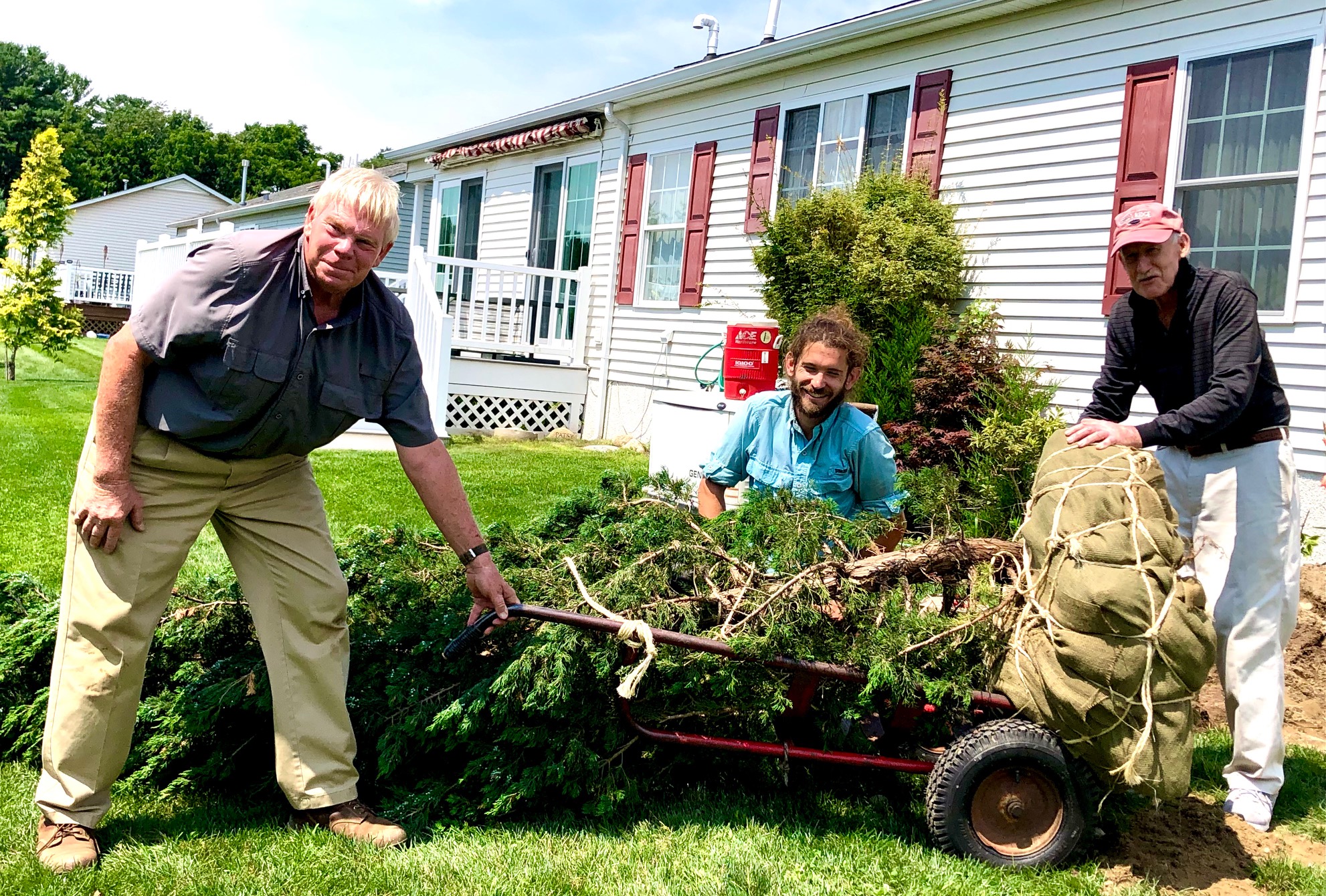All words about the American chestnut are now but an elegy for it. This once mighty tree, one of the grandest features of our sylva, has gone down like a slaughtered army before a foreign fungus disease, the Chestnut blight. In the youth of a man not yet old, native chestnut was still to be seen in glorious array, from the upper slopes of Mount Mitchell, the great forest below waving with creamy white Chestnut blossoms in the crowns of the ancient trees, so that it looked like a sea with white combers plowing across its surface. Gone forever is that day; gone is one of our most valuable timber trees, gone the beauty of its shade, the spectacle of its enormous trunks sometimes ten to twelve feet in diameter. And gone the harvest of the nuts that stuffed our Thanksgiving turkey or warmed our hearts and fingers at the vendor’s street corner.
Donald Culross Peattie (1898 – 1964) American naturalist, author
A Natural History of Trees of Eastern and Central North America (1948)
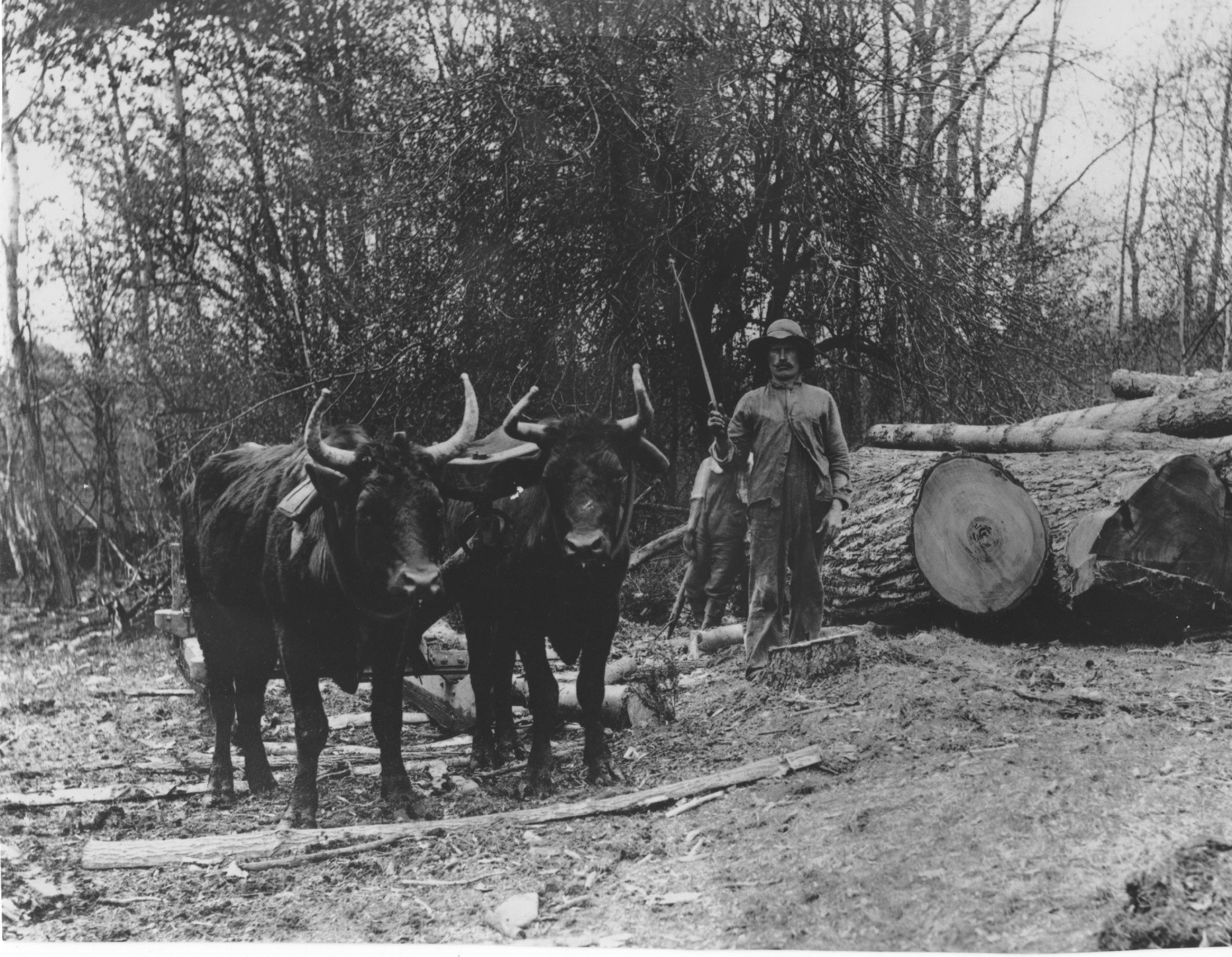
Chestnut logging, Rutland, MA, 1890
Donald Culross Peattie expressed with such eloquence and sympathy the profound sadness that so many Americans felt about the loss of the chestnut during the first half of the twentieth century. Seventy-four years have passed since these words were written and we couldn’t be happier to share the long overdue good news about the incredible progress that’s being made to restore pure American chestnuts (or a reasonable facsimile thereof) to our forests as well as introducing hybrid chestnuts to our back yards and dinner tables!
Perhaps some people have become aware of the breeding program of The American Chestnut Foundation (TACF.) Three back cross generations and two intercrosses creates a chestnut that is 93.75% American with the remainder of Chinese genes that confer a level of blight tolerance. If you’re interested in seeing one of the best examples of this progress you would be well advised to visit the orchard at the MassWildlife Headquarters in Westborough behind the maintenance building.
The plan for the MassWildlife orchard, as we understand, is that the 6,000 trees there will be challenged with blight inoculations expecting that only about 40 or so will eventually be selected. Those 40 trees, however, will be not unlike an all-star team, functioning as a seed production orchard that will provide high quality chestnuts to be planted in their 220,000+ acres of Wildlife Management Areas across Massachusetts. Knowing MassWildlife’s work ethic we have full confidence in their ability to reintroduce chestnut trees in such a way that they will be able to thrive, evolve and reproduce in a natural forest setting.
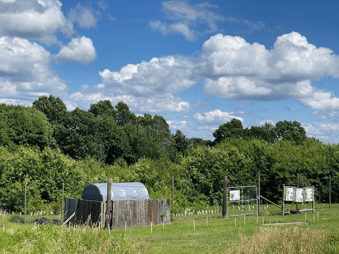
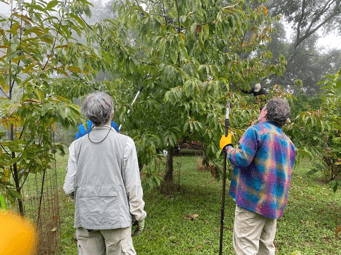
MassWildlife Seed Production Orchard | ACCF fall harvest
Less well known, but just as consequential, is the work that the American Chestnut Cooperators’ Foundation (ACCF) has been doing, using only pure Americans. Last fall we travelled to SW Virginia to help with the harvest at one of their orchards on US Forest Service land in the Blue Ridge Mountains. The orchard we worked in was very healthy and productive. We have begun to distribute the seedlings from our Virginia trip to the local land trust community as well as the 8,000-acre Norcross Wildlife Sanctuary in Wales, MA.
Although restoration of a tall timber type American chestnut tree to the forests is very exciting, so too is the increasing interest in the varieties of chestnut hybrids that are now becoming available. Today’s chestnut breeders benefit from the work done by the Connecticut Agricultural Experiment Station, which since 1930 has managed the longest continuous breeding program in the country.
These highly blight tolerant hybrid chestnuts, which are more like orchard trees than forest trees, reliably produce nuts that are large and tasty beginning at a relatively young age. There are encouraging signs that Massachusetts farmers are already engaged in growing chestnuts as a commercial crop. For example, Sunset Farm in Amherst has been growing Dunstan chestnuts along with organic vegetables for several decades now and has a decidedly loyal consumer base.
Western Mass. can also take pride in Big River Chestnuts in Sunderland and Carr’s Cider House and Preservation Orchard in Hadley, both utilizing Chinese chestnut hybrids. They show the level of interest informed consumers have in this emerging market. Western Mass is so beautiful that there are many reasons to visit in the fall, but to be able to return with fresh chestnuts is yet another. We hope that central and eastern Mass residents will visit these orchards and become inspired to follow their lead so that people in every region of the state will have access to an increasing amount of fresh local chestnuts every year.
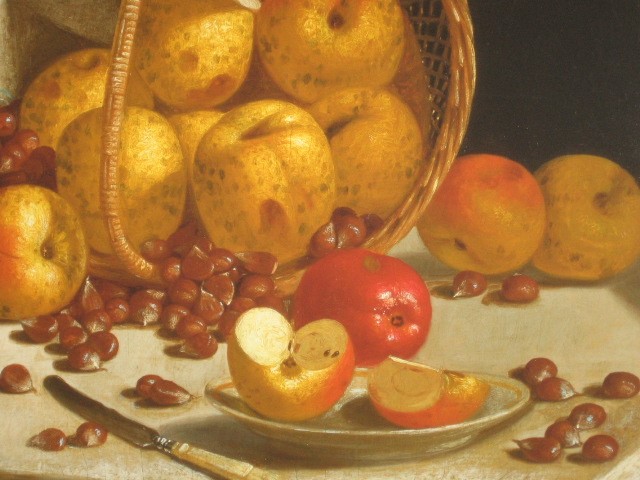 Apples & Chestnuts by John F. Francis, 1859. Museum of Fine Arts Boston.
Apples & Chestnuts by John F. Francis, 1859. Museum of Fine Arts Boston.
Unfortunately, most people today associate chestnuts with Nat King Cole’s classic “The Christmas Song” and mistakenly believe that roasting chestnuts was the only way that they could be enjoyed. Chestnut’s versatility as a food makes them so much more than that! Chestnuts are truly a nutritional powerhouse. They are so low in fat and calories compared to other nuts they could be called “the un-nut.” They are gluten free and loaded with complex carbohydrates. An interesting fact is that these are the only nut that is a significant source of vitamin C.
Chestnuts seem to augment the flavor of anything they’re added to as well as boosting its nutritional profile. My favorite recipe is maple glazed pan roasted brussels sprouts with chestnuts and bacon. My second favorite would be chocolate chestnut ice cream! Chestnuts as a super food points to the bounty of nature and would be an excellent addition to anyone’s garden.
Chestnuts are indeed BAAAACK and we think that if he were with us now, Mr. Peattie would be smiling all day long!
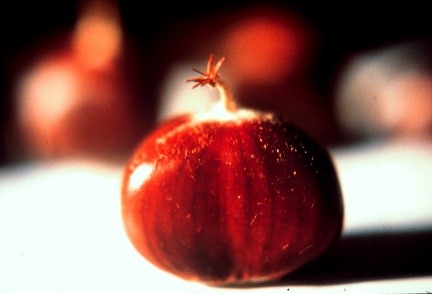 "There is something singularly refreshing in the color of this nut,
"There is something singularly refreshing in the color of this nut,
the chestnut color. No wonder it gives its name to a color."
- Henry David Thoreau, 1852
This article was originally published in Leaflet, an MHS publication, in August 2022.



